Do you ever feel you don’t have enough time or are drowning in paperwork?
If so, you are not alone. Most professionals agree that manually managing documents takes a lot of time. Today’s paper document management and filing methods are expensive, wasteful, and often ineffective. As per the facts,
- The ordinary North American uses 504.84 pounds of paper each year.
- Filing a document costs $20, finding a lost document costs $120, and reproducing a document costs $220.
However, there must be a better approach in today’s quick-paced world. There is document automation software, thankfully.
We will learn more about the top 11 document automation software in the following paragraphs to find out how they may help you save hours of your time.
In case you’re in a hurry, Nanonets is our top pick as a document automation platform, followed by Adobe and Documate. Here’s a snapshot of the comparison.

Best 10 Document Automation Software in 2023
What is document automation software?

Document automation software helps you save time by streamlining your company procedures. Users may generate, change, edit, and manage documents based on various data points using this kind of software.
Using it makes it easier to create dynamic, editable templates that can be used to create commonly used documents. You can quickly produce a broad range of documents, including contracts, bids, forms, proposals, and more using document automation software.
Best 11 Document Automation Software for your business.
1. Nanonets [Start your free trial]
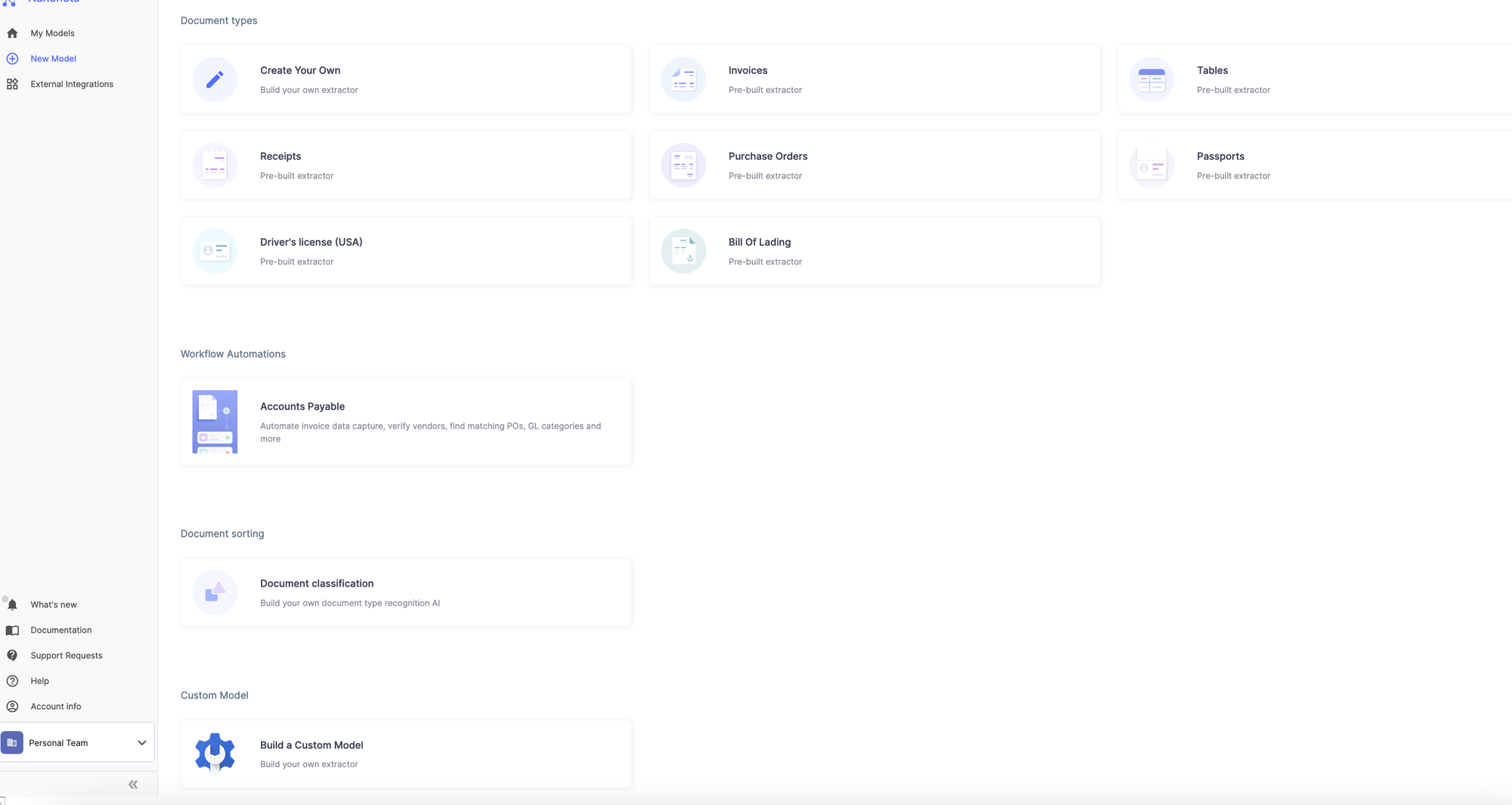
Nanonets is a no-code document automation platform. Nanonets can automate all aspects of document processes, from document capture, document verification, approval workflows, incident management, document storing, and more.
Users can use Nanonets to automate manual data entry from documents and improve document processing speeds. Nanonets can be integrated with 5000+ software in minutes.
Nanonets has an advanced OCR API that detects document types, extracts relevant information from the documents, and digitizes documents in minutes. Using Nanonets workflows, you can automate any process like customer onboarding, ID verification, invoice processes, account payables, and more with a click of a button.
Nanonets has multiple templates to automate document processes, but you can also create your own AI model in <15 minutes.
Pros
- Easily capture documents from data sources like Gmail, drive, outlook, and more.
- Extract data from documents with >95% accuracy
- Advanced OCR API
- Easy-to-use Interface
- No-code platform
- Automate any process with workflows
- Create complex logic functions to verify documents
- Templates and easy customization options
- Wide choice of integrations
- Role-based access control
- Audit Trail logs
- Transparent pricing – check pricing plans
- 24×7 support
Cons
- No document generation options – Can be integrated with Microsoft word to input documents directly
- Can’t be used for e-sign – Can be integrated with other e-sign software
- No mobile app
Over 30,000+ users trust Nanonets for automating 30 million documents on the go! Here’s what our super customers say about Nanonets.

Over 1000+ enterprises trust Nanonets to automate more than 30M+ documents yearly. Try Nanonets for document automation, or schedule a call with us for free!
2. PandaDoc
PandaDoc is a document automation software specifically designed to streamline the sales process. It allows users to easily create, review, and e-sign proposals, quotations, and contracts. Its drag-and-drop editor, one-click uploads, and a collection of well-crafted templates make creating new documents simple.
Additionally, the software allows users to monitor customer interaction with sent documents and receive real-time notifications for any necessary attention. However, it may not be suitable for document automation needs outside of the sales process, and the starting price for the software is $19 per user per month. More advanced document workflow capabilities are only available on the Business and Enterprise plans which start from $59/user/month.
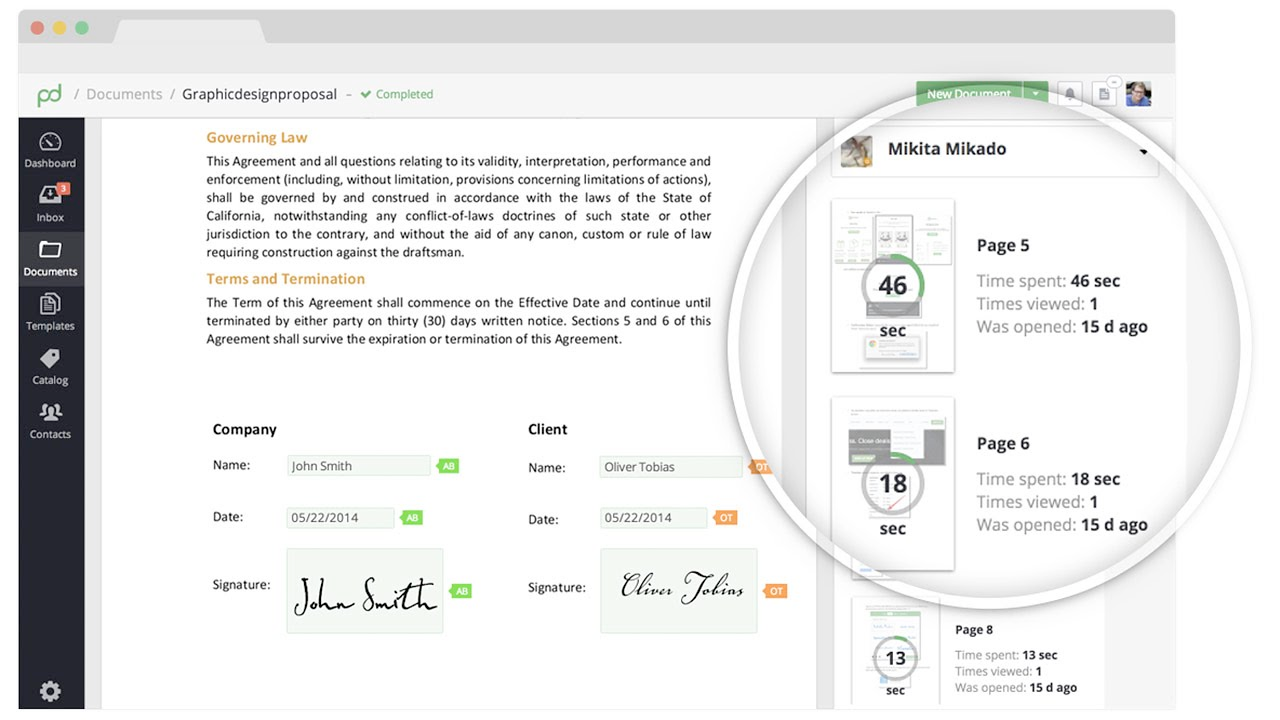
Pros:
- Clean and simple-to-understand UI
- Preloaded templates available
- Ease of use
- Wide choice of integration options
- Tracks the number of times a prospect reads a quote
- Allows other fields and other info to be added
- Electronic signature
- Highly customizable
- Smooth user performance and content reporting
Cons:
- Poor integration with CRMs
- High pricing for automation features & large team size
- The UI could be overwhelming at first
- Text fields are hard to edit
- Confusing Menu layouts with Lots of images and options in each menus option
- Difficulty in form naming
- Multiple users are required
- The functionality of moving tiles within templates can be improved
- More tutorials would be helpful
- Difficult to modify document processes
- No conditional logic on forms
Automate documents on the go with no-code workflows. No hassle, No credit card, and No spam from our side. Only smooth automated document processes. Start your free trial or set up a call now.
3. Jotform PDF Editor
Jotform can make your documents look pretty and professional by using its drag-and-drop editing and over 1,200 pre-made templates that you can change to match your company. Even though Jotform is still new at making documents, it can be good for big companies who want to put forms on their websites so they can get information from customers.

Pros of using Jotform
- Easy-to-understand tables
- Allows customers to choose the right product based on a set of questions
- No setup fee
- Free/Freemium Version
- Response tracking
- Real-time results
- Best for form processing
Cons of using Jotform
- Intermittent slowness
- Non-automatical save disable button
- Problems synchronizing info between smartphone App and Web
- Slight improvements are required for ease of use
- Not necessarily intuitive for most users
- Improper PDF Downloading alignment
- Options for exporting to Excel should be more intelligently designed.
- Email editing could be enhanced with a wider selection of templates.
- The massive watermark at the bottom of the form
- Table fields can only be updated from forms, not the other way around
- Phone customer service and chat support can be improved
- Hidden pricing
Use Nanonets for document processing.
No hidden pricing. Excellent customer support. Dependable workflow-based document automation software.

Rated 4.9 on Capterra. Try for free now. No Credit Card is required.
4. Documate
Documate is a user-friendly, no-code legal document management software. It enables users to design unique online forms that automatically fill up Word or PDF documents with data.
To assist legal aid charities in creating client-facing processes, a team of attorneys and technologists created Documate in the beginning. Although lawyers seem to be the software’s primary customers, any business may produce papers using Documate’s simple facilities. The starting price is $99 per month with a ten workflows limitation.
Pros of using Documate
- Good Cross-platform work like Windows and Mac
- More control over our data
- Easily Customizable Questionnaires
- Generates agreements and price-lists
- Lowers human error
Cons of using Documate
- Basic Document Management features
- Not All Features in Initial Tier
- Expensive for more features
- No Premium Consulting / Integration Services
- Long implementation process
- Inserting the code requires troubleshooting
- Fewer colors and design themes
- Geared towards lawyers
- Good for small businesses
- Not a great legal OCR engine
Automate legal documents and more!
Try Nanonets for free now, process documents 10x faster, and save 80% of costs! No Credit Card is required.
5. Templafy
Templafy is a platform that helps big companies manage, update, and share important information and materials throughout the company. Managers and compliance teams can control what information is used by making sure only approved information is used by setting permissions.
Employees can use Templafy to easily make important documents like contracts, proposals, and sales materials using the tools inside their word processing software. Templafy is a good fit for bigger businesses with at least 50 users.
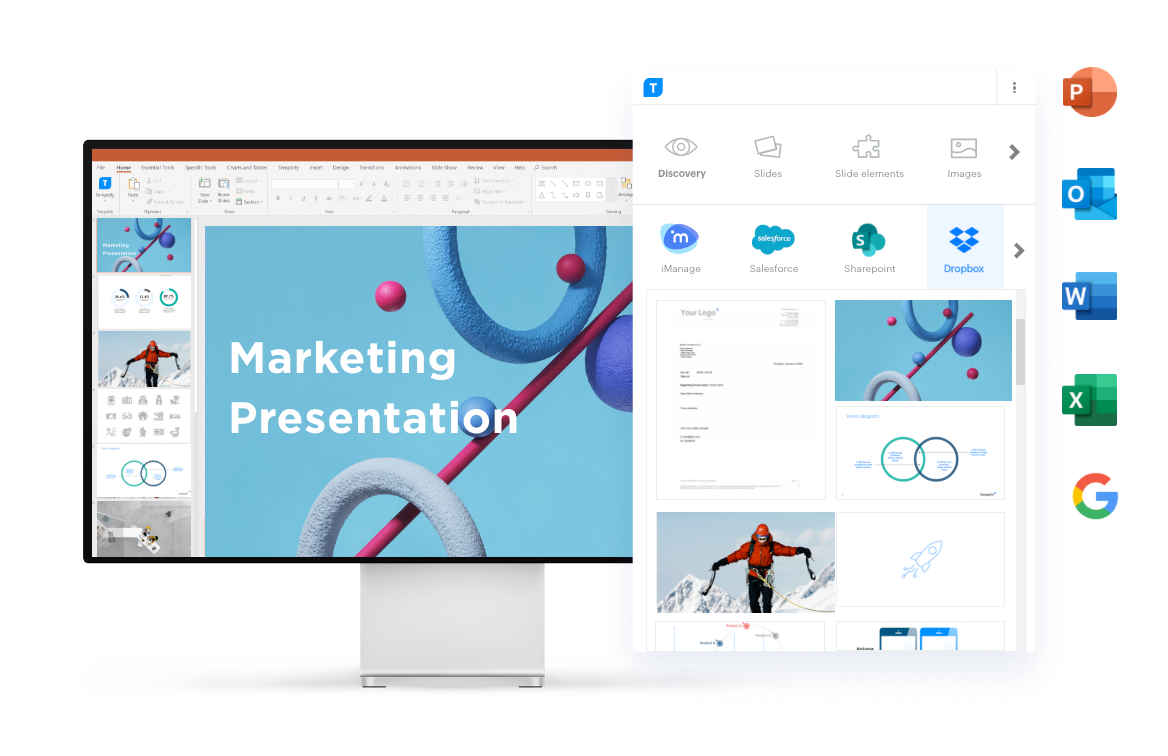
Pros of using Templafy
- Simple user interface to make choices and see results
- It puts the power of customization in the user’s hand
- Quick setup and powerful
- Great Customer support
- Greater productivity
Cons of using Templafy
- Web-based user interface and independence from Microsoft software
- The software formerly had difficulties with double authentication for certain users.
- For the time being, the software does not enable deep link sharing.
- There is currently no smartphone version available.
- Geared towards document generation rather than document process automation
- Expensive for small businesses
Looking for trusted document automation software? Switch to Nanonets. Trusted by 10,000+ customers across the globe.

6. Conga
Conga Composer can be your answer if your sales team seeks document automation software to utilize with Salesforce. Conga develops native Salesforce solutions that integrate Salesforce data with processes and automated document generation.
Conga also offers a variety of additional Salesforce-related document management applications. You must get in touch with the business for a quotation since pricing is done on a personalized basis.
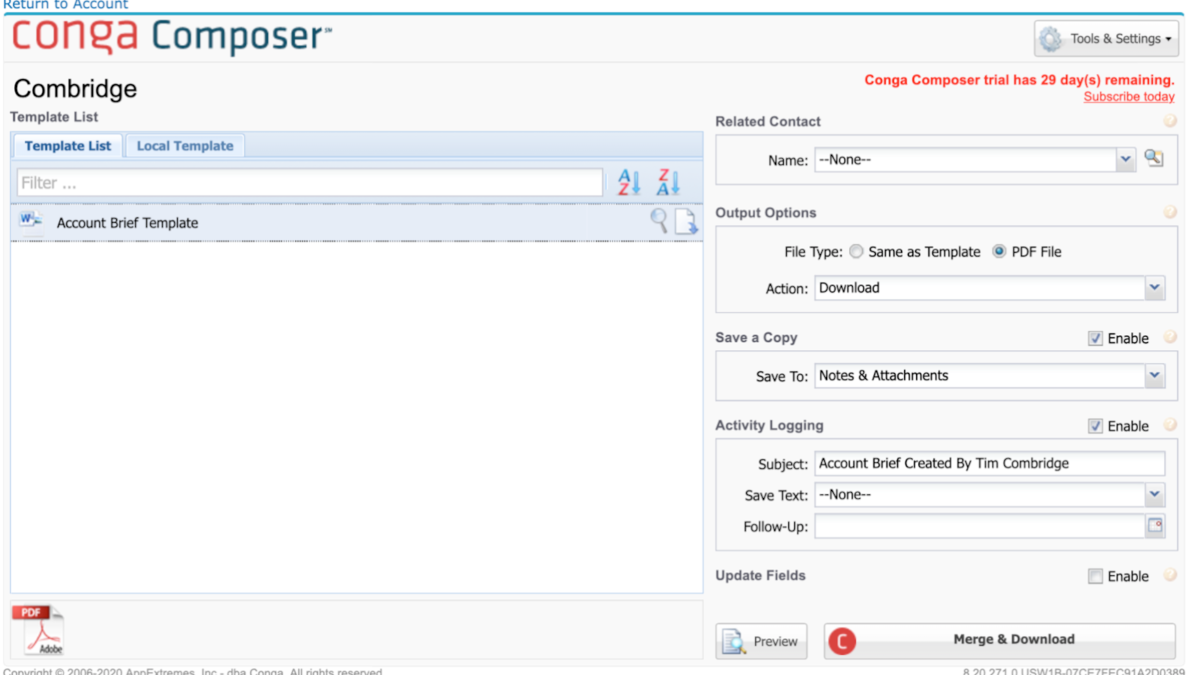
Pros of using Conga
- Supports Multiple Users
- Salesforce Integration
- Electronic signatures
- Transparency of edits among team members
- Customers can somewhat quickly sign the agreements
- Pulls in all quote info easily
Cons of using Conga
- UI can be more interactive
- It continues to use outdated VF pages.
- The flow of the template builder can be improved
- Certification Maintenance is relatively tough
- Complex setup – It takes training and hands-on experience to set up this independently.
- It’s challenging to replicate contracts using the parent feature.
- Some composer settings can’t be added straight from the solution builder.
- Reporting errors
- Salesforce Lightning does not support all product features
- Formatting is inadequate
- Sometimes it might be challenging to merge fields for photos or signatures.
Use document automation software that integrates with all software and delivers on all promises. Join 10,000 users in automating documents on Nanonets.
7. Woodpecker
Small and solo law firms searching for essential document automation software suited to their requirements would love this Microsoft Word add-in. Users may create templates and automate document production processes with Woodpecker, all from inside Word.
Users can optimize their document processes with over 2,000 software connections using Zapier and Woodpecker’s open API. Costs begin at $39 per month (for an annual plan) with limitations
Pros of using Woodpecker
- Accelerates drafting of legal documents
- Integration with Microsoft word
- Easy to add variables via the sidebar
- Good for document assembly
Cons of using Woodpecker
- Geared toward law users
- Clumsy user interface
- It has a learning curve – not intuitive enough
- Not exactly document automation – more towards document generation & templatization
8. Adobe Acrobat DC
Adobe Acrobat allows you to easily create, edit, convert, share, sign, and merge documents with Acrobat from inside the Adobe platform. As a result, you can build fluid digital experiences that make it simple for your team to work together and communicate from any device, anytime, anywhere.
Adobe document automation allows organizations to create PDF documents in word, page, or ppt formats. With document generation API, you can insert code in your word document to create invoices or any other PDF or word document automatically.
Pros of using Adobe
- Intuitive User interface
- Automatically create PDF documents using a template
- Password protection for enhanced security
- Audio speech capability
Cons of using Adobe
- Expensive as compared to other tools
- The free version lacks basic features
- OCR API does not capture text perfectly.
- Lack of integrations
- You can’t add multiple signatures to a single document
- Longer load time
- To automate, you need to use the Adobe Pro Wizard version
- Cannot automate document processes like approvals or verification.
Looking for better document automation alternatives? Try Nanonets. Start a free trial or get a free product tour.
9. BRYTER
Expert teams like Legal and Compliance can make their expertise digitally accessible using Bryter.
Bryter’s no-code platform can generate documents and use document workflows to automate document processes. Bryter can build digital applications without writing a single line of code. Bryter works towards enabling digitization in organizations with simple yet powerful applications. No pricing information is provided.

Pros of using Bryter
- No code platform
- Pre-existing templates for document automation
- Advanced-Data visualization
Cons of using Bryter
- Speculative Design
- Efforts required to make it work
- Geared toward contract generation
- Difficult to set up
- Templates are not very intuitive to use
- Lacks accessibility features
10. XaitPorter
XaitPorter includes a built-in workflow based on a database to facilitate information reuse and automatically handles formatting, layout, and numbering. Tenders, contracts, license applications, field development plans, useful reports, yearly reports, and many other documents can be automated XaitPorter.
Formatting, layout, and numbering are all taken care of automatically. XaitPorter ensures that our customers can manage, preserve, and use their material more effectively since it is based on a database.
Pros of using Xait
- Automates document generation and PDF creation
- Can use workflows to automate document creation
- option to archive previous RFPs
- Simple to use
- Enhances document collaboration and co-authoring
Cons of using Xait
- Geared towards co-authoring documents
- No advanced document process automation features
- No pricing provided
- The new version has bugs in understanding tables
- Word import isn’t bug-free
- UI can be better
- Dashboards are difficult to understand
Switch to Nanonets, an easy-to-use no-code platform to automate your document process in 15 minutes.
No hassle, No credit card, No spam from our side. Only smooth automated document processes.
The blog lists the top document automation tools available in the market. Try to compare your requirements with the document automation tools’ features. Try their free trials and select the best automation tool.
Nanonets is a robust solution to automate all your document processes if we consider some significant features of document automation software.
Here is the snapshot of comparision of the top document automation platform in the market.

Selecting the best document automation platform can be vital in successfully implementing automation throughout the organization. Find the right flexible, customizable system that fits your requirements. With so many vendors in the market, this decision requires a lot of research. But don’t worry. We’re here to simplify the process of document automation vendor selection.
Evaluate vendors based on the following criteria and find the best solution.
- Document Type
- Accuracy of OCR models
- Exception Handling processes
- Workflow automation
- Template vs Custom Models
- User Friendliness
- Support
Supercharge your document processes with Nanonets
Streamline your document processes and increase efficiency with our advanced AI-powered document automation platform. Effortlessly automate your document processes with no-code workflows and a powerful OCR software.
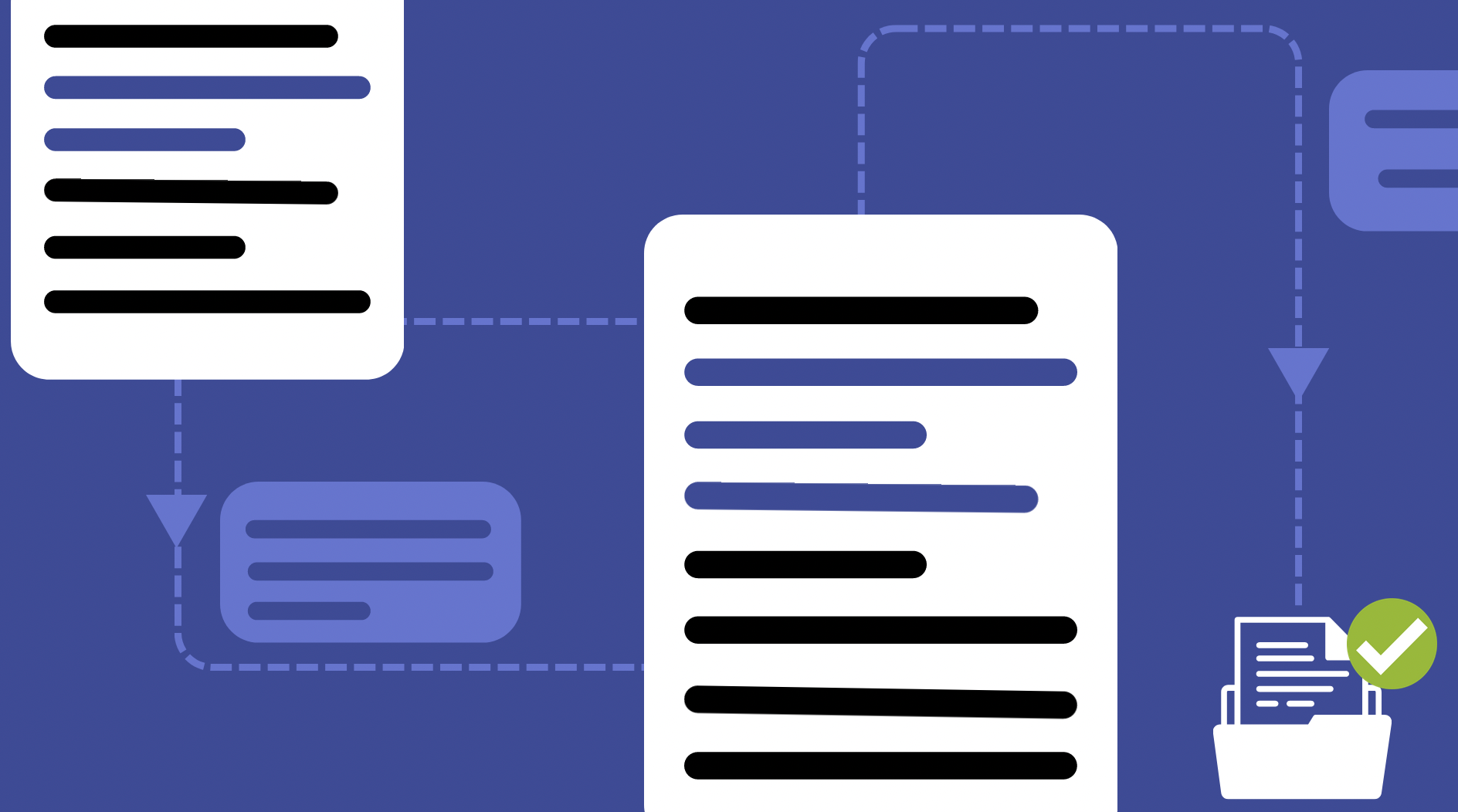
Want to see how it works?
Start your free trial or set up a call now.
FAQs
What are the benefits of using a document automation platform?
Reduce manual errors and save time
Document automation software helps save time by automating various repetitive operations, such as adding headers, page numbers, and tables, and formatting, such as font size and layout. Preparing papers manually in significant quantities also helps lower the possibility of human mistakes.
Nanonets can save more than 90% of the time by automating manual processes. See how you can save your time too.
Improve and standardize paper processes
Document automation software makes it easier to generate documents that are in keeping with your business’ branding. Users may create and save templates with the usual text characteristics (type, font size, color, and file name), a corporate logo, and contact information. The program gives you total control over branding when distributing client-facing business papers.
Visual Consistency
To retain a strong brand presence and professionalism (corporate identity), you need all your papers to have the same appearance, utilizing the same logo, font, size, and colors everywhere. All of your publications can incorporate this aesthetic uniformity.
What is document automation software?
Document automation software is software that automates every aspect of the document lifecycles, like document generation, collaboration, data extraction, storage, and more. This can include merging data fields into templates, generating documents based on input data, and streamlining document approval workflow processes.
What is document process automation?
Document process automation is using technology to streamline document creation, processing, storage, and document management at scale. This includes automating manual tasks such as data entry, routing documents for approval, and generating reports.
How do you automate a document?
You can automate a document easily using a document automation platform like Nanonets. A workflow management system can route incoming documents into the software, extract data, and approve, classify, and index documents before storing them in secure cloud storage.
How to automate a PDF file?
Yes, it is possible to automate a PDF file using a document automation tool with OCR software. You can extract the text from PDF documents and use them as triggers to perform task automation like data entry, data transformation, document classification, and document archiving.
You can also use PDF automation software which provides functionality like data extraction, validation, splitting, merging, and annotation for PDFs.
Start automating document processes with Nanonets for free.
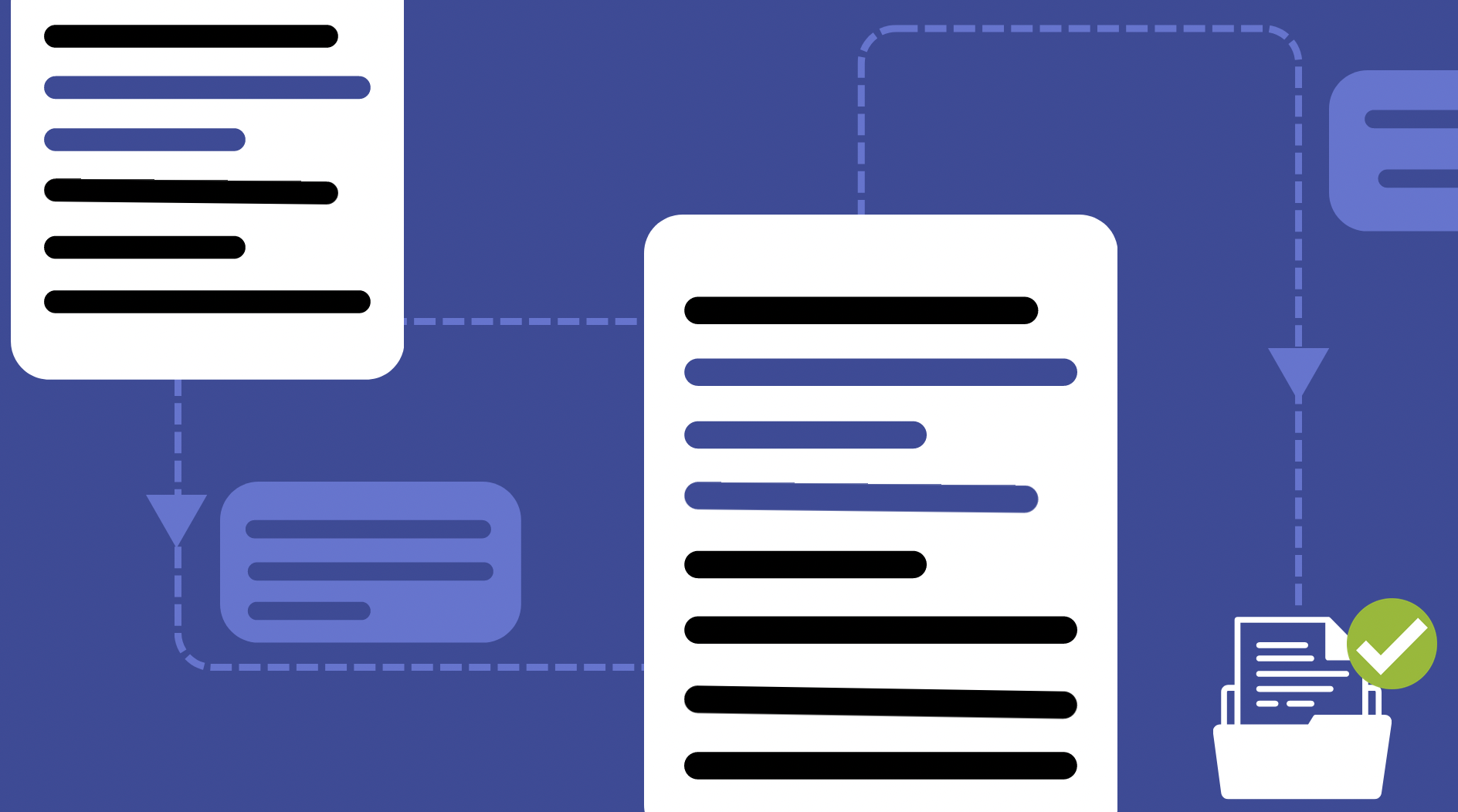
Read more:
Accounting Automation Software
10 January 2023: The blog was updated on 10 January 2023 with relevant, fresh content. The blog was originally published in 12 July 2022.
- SEO Powered Content & PR Distribution. Get Amplified Today.
- Platoblockchain. Web3 Metaverse Intelligence. Knowledge Amplified. Access Here.
- Source: https://nanonets.com/blog/best-document-automation-softwares/



